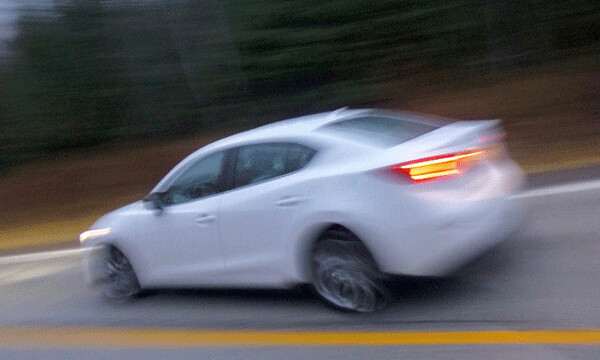Redone Mazda3 just gets better for 2019
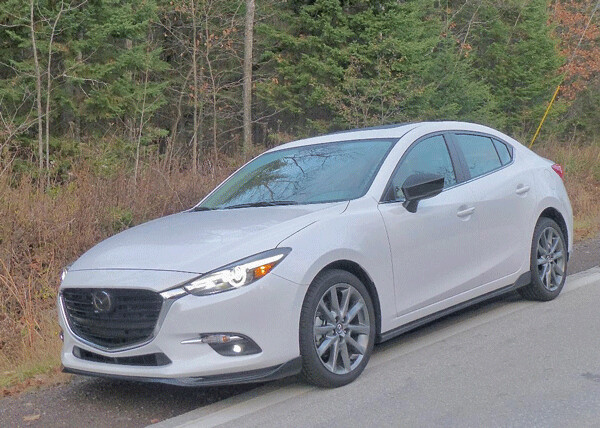
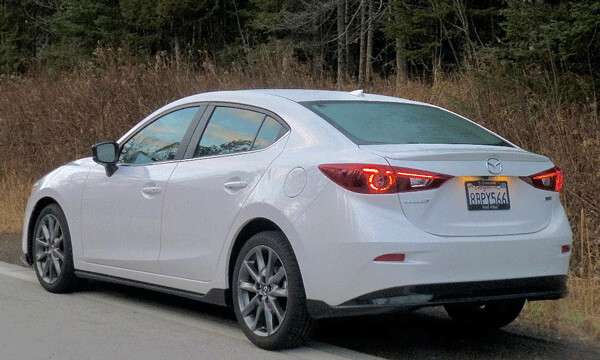
Full disclosure, as they say in the non-fake-news biz: I really like the Mazda3, and I have since it was brought out anew, and then redesigned and turned into a high-tech tour-de-force.
The technology of Skyactiv engineering, with its holistic design that ties together all the latest technical advances into a workable over-achiever has added to the appeal of a compact sedan or hatchback that already has become the best looking car in a highly competitive segment that includes such heavyweights as the Honda Civic, Toyota Corolla, Nissan Sentra, Hyundai Elantra, KIA Forte, Subaru Impreza, and Volkswagen Jetta.
That is subjective, of course, but the car has successfully taken on all of them in various auto magazine comparisons, and its Skyactive powertrain has kept it competitive against even turbocharged competitors.
We’re told that during the 2019 model year, the Mazda3 will get a spiked 2.0-liter 4-cylinder, called Skyactiv-Plus, or something like that. It is supposed to have a 15-20 percent increase in both power and fuel efficiency, and since the existing one can reach over 40 miles per gallon, I can’t wait to road-test one. When Honda came out with an all-new Civic for this year, it met rave reviews, and even objective reviewers said it could compete with the best cars in the segment, such as the Mazda3. The Civic has gone to a turbocharged engine, which is interesting.
Of course, a year ago, Mazda fitted its brilliant G-Vectoring system onto the Mazda3, making the already slick-handling Mada3 corner as if on rails.
My first chance to test drive the new Mazda3 came a couploe of weeks ago, when a sparkling “Snowflake White Pearl” paint, which made its charcoal grey wheels and black grille stand out.
When I got the information about the car, I learned that it had the 2.5 -liter 4-cylinder - the larger Skyactiv engine that powers the larger Mazda6 and the CX5 compact SUV - instead of the 2.0. My preference has always been the 2.0, because while the EPA estimates are only one mpg different, thbe real world driving in our family has produced 8-10 mpg better with the 2.0 than the 2.5.
I must say, however, that I was pleasantly surprised that the Mazda3 even with the larger engine gave us 32-34 miles per gallon in city driving, which was better than I had anticipated.
Meanwhile, the power delivery of the larger engine made the Mazda3 carve out a new reputation with those of us who appreciate the “zoom-zoom” promotional saying Mazda uses so effectively. This car might need capital Zoom-Zoom spelling.
A year ago, I got 42 miles per gallon with the 2.0, but if you need more power, the 2.5 is a willing accomplice and if it can delvier a consistent mid-30 mpg calculation, it’s not a bad choice.
The Mazda3 retains its general appearance, with neatly converging lines on the sides blending just right to give the car a more-than-the-sticker-implies. Same with the interior amenities.
The car is well-equipped for $24,195, and at that might be as good a compact car bargain as you can find. The test car added the appearance package, with front air dam, rear bumper skirt, side sill extensions, to go with the optional scuff plates on the front-wheel drive car. It also had the premium equipment package, with navigation system, paddle shifters, heated steering wheel, adaptive front lights, radar cruise, auto-dim lights, lane departure warning, lane-keep assist, and smart brake support.
Those additions were all appreciated, even though they lifted the final as-tested price to $28,385.
The 2.5 engine produces 184 horsepower and 185 foot-pounds of torque, operating under direction of a 6-speed house-built automatic with those paddle shifters.
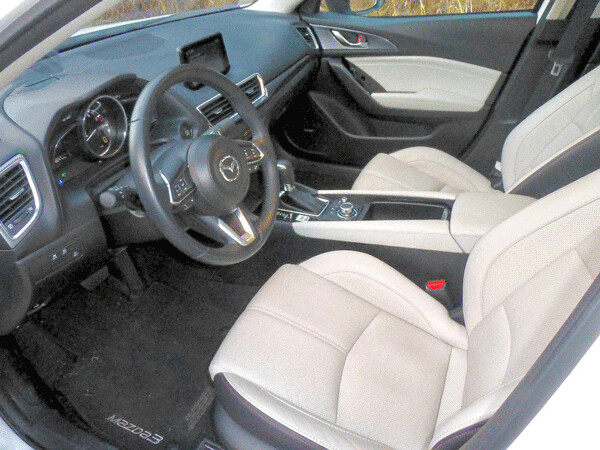
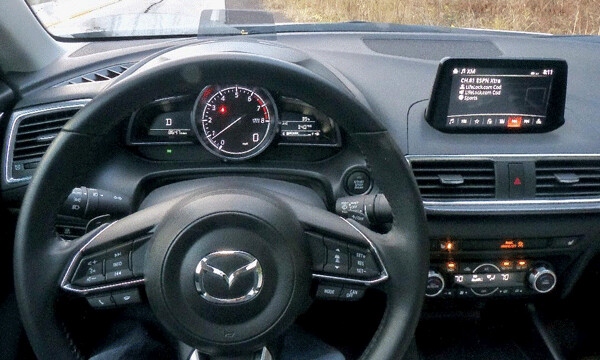
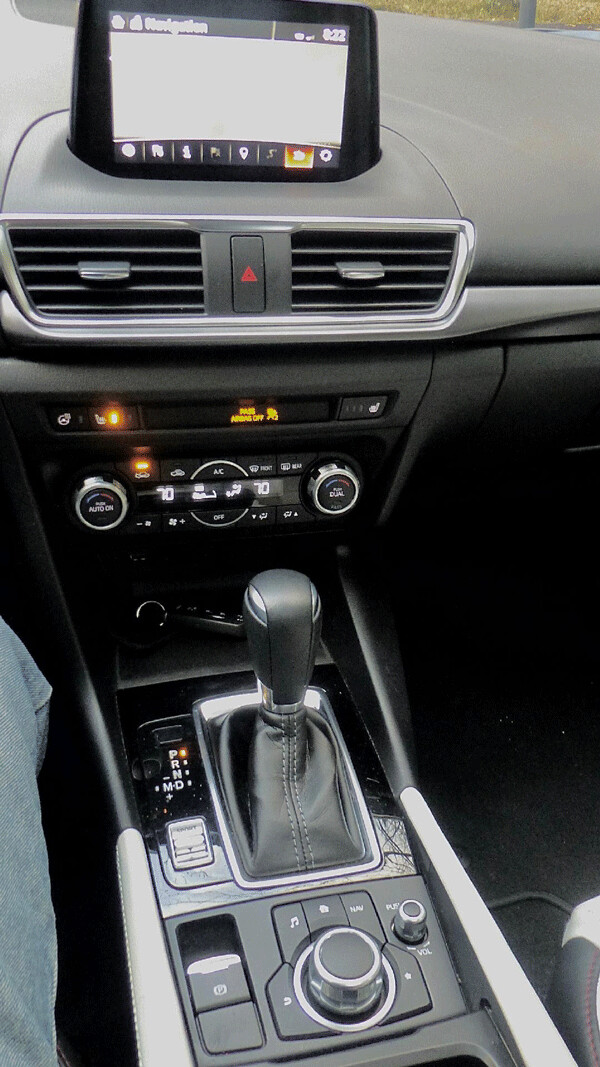
With Mazda, you always get more than you expect, and nice touches on the new Mazda3 include a dashboard that is classy in its simplicity, with a center-mounted nav screen and a straight and smooth dashboard running from there to the passenger window, without gadgets and gimmicks. The driver gets to look at a race-car or motorcycle style pod that includes a full-sweep tachometer with a digital speedometer packed inside the arc.
Easy to read and easier to get acclimated to. Then on top of the pod, near the windshield, a small rectangle of plastic folds up when you start the engine, and is the perfect heads-up display. Without projecting information on the windshield, Mazda projects speed, speed-limit, and other items you can pre-set. It sits there, without intruding on your view down the road, with its info superimposed against the hood.
You can adjust the color of the instrumentation as well. The headlights and foglights are LED, which mean bright; dynamic traction and stability controls, hill launch assist, blind-spot monitoring, rear cross-traffic assist and tire monitoring system all are included on the Grand Touring model.
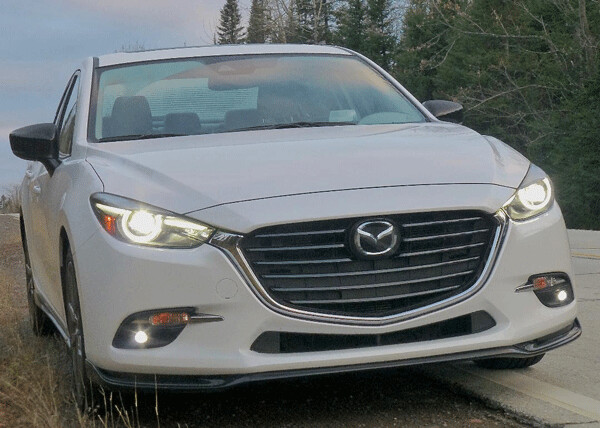
While the bright metallic white paint was stunning, the parchment-color sport bucket seats added to the general classiness of the car.
Mazda, a small company located in Hiroshima, Japan, uses its small size to take shortcuts in new model production, and its full array of vehicles right now is impressive. The new Mazda3 fits in well, even with the 2.5 engine. Besides, that gives me reason to lobby to also get a drive in the car with the newest upgrade on the 2.0.
